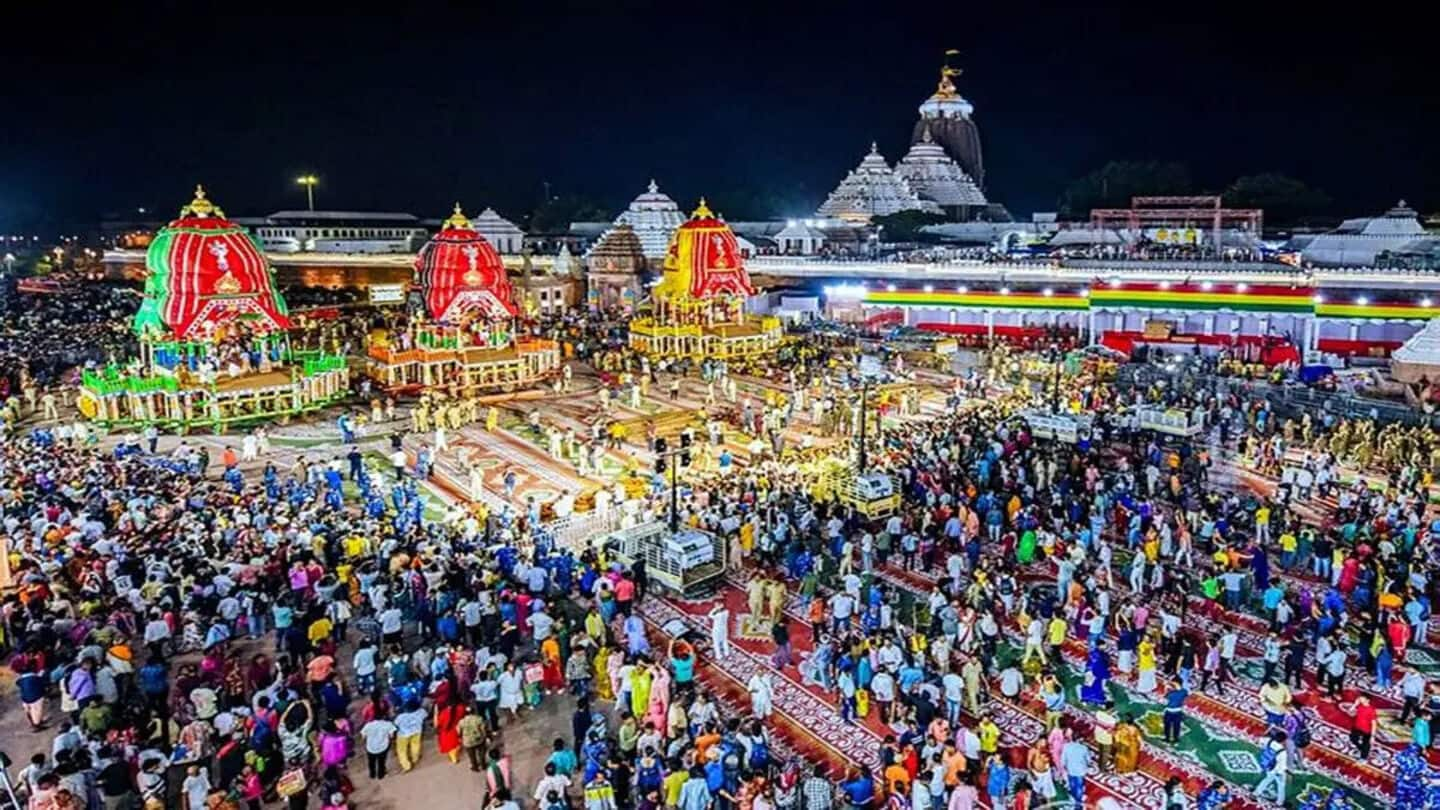
Jagannath Rath Yatra 2025: What happens to chariots after festival
What's the story
The Puri Jagannath Rath Yatra, a grand annual celebration, is being held on Friday, June 27, 2025. The festival sees Lord Jagannath and his siblings, Balabhadra and Subhadra, travel through the city in massive wooden chariots. Each year, new chariots are constructed from scratch using five types of sacred wood. The construction is completed in just 58 days by over 200 artisans using a golden ax to cut trees ritually worshiped for their auspicious symbols.
Chariot construction
Chariots made from phasi, dhaura, simili, sahaj, mahuwa woods
These massive wooden structures are rebuilt by 70-80 artisans who work entirely by hand. The chariots are made from Phasi, Dhaura, Simili, Sahaj, and Mahuwa woods sourced from Mayurbhanj, Ganjam, and Keonjhar districts. Priests select trees based on auspicious symbols such as the conch, chakra, and mace that appear naturally on their bark. These trees are ritually venerated before being cut down with a golden axe. Dhaura is used for axles, while Simili forms the upper portions of the chariots.
Divine procession
Significance of the Rath Yatra
The process also involves around 50 tons of iron and 300kg of brass. The Rath Yatra holds deep religious significance as it symbolizes Lord Jagannath's annual visit to his aunt's home at Sri Gundicha Temple. The deities stay there for seven days before returning in a procession called the Bahuda Yatra on August 5. This journey is believed to fulfill Lord Krishna's promise to visit his devotees annually during his journey from Mathura to Dwarka.
Post-festival
What happens to the old chariots?
After the Bahuda Yatra, the old chariots are dismantled by the same artisans who built them. The sacred wood is then distributed among devotees or donated to the temple. Some parts are auctioned off as well. The Jagannath Temple in Puri, which dates back to the 12th century, is one of India's four sacred Dhams and houses Lord Jagannath's deities along with his siblings Balabhadra and Subhadra.